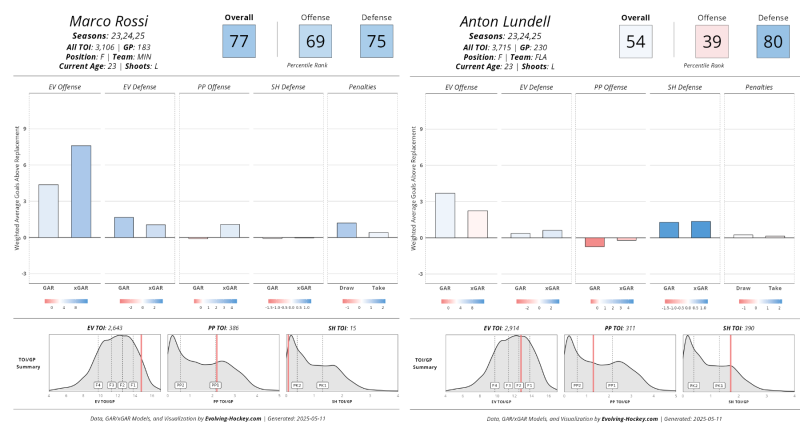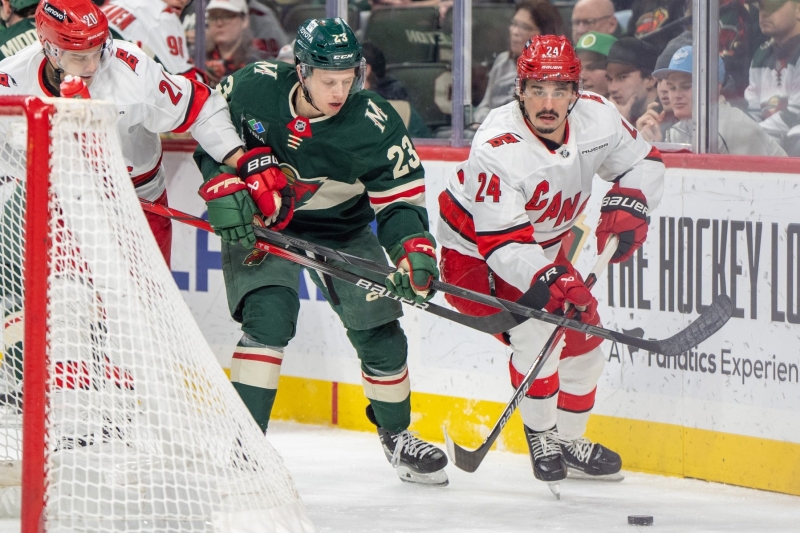“Best Available Player” is a phrase that gets thrown around a ton at draft time. There’s a beautiful simplicity to the philosophy. Just add talent, and get the best players you can. It’s so obvious!
Fans thinking, If I were the GM, I’d simply go BPA, is the basis of why, for example, the Minnesota Wild drafting Charlie Stramel in 2023 inspired backlash. It’s why fans in 2024 laughed as the Philadelphia Flyers traded down one spot to not draft Zeev Buium, allowing Minnesota to pick up a talented defenseman for a third-round pick and the right to draft lower-ranked center Jett Luchanko.
As for me? I’m more inclined to lean towards a “BPA” approach. It’s not always that simple, of course. For example, there is rarely a clear-cut “Best Player Available.” A team’s scouts also might genuinely judge a prospect to have more or less talent than the consensus, muddying those waters further. However, I generally believe the purpose of the draft is to accumulate as much talent as possible, then patching up any organizational holes later.
It also appears to be a philosophy that Wild director of scouting Judd Brackett buys into. He’s a scout who tends to take fallers — players with significant talent who slip through the cracks, for one reason or another. By contrast, Chuck Fletcher’s regime, led by head scout Brent Flahr, loved late risers: players who were generally off the radar as first-rounders, but made massive strides in the months leading up to the draft.
You can see the “fallers” throughout the Wild’s recent draft history. Buium partly fell due to a loaded defensive class at the top of the draft. In 2022, Danila Yurov fell because of “The Russia Factor.” In 2021, Jesper Wallstedt tumbled down the draft board, despite being widely considered the top goalie of his class.
And, of course, in 2020, Marco Rossi fell to No. 9 overall. Statistically, there was an argument to make that Rossi was the best prospect in his class. Hockey Prospecting’s model had him as the likeliest player to turn into a star, and the third-likeliest to play 200 NHL games. NHL scouts weren’t quite as sold, but among that group, he still had a consensus ranking of seventh in his class.
Faced with choosing between Rossi, a skilled winger (Cole Perfetti, who went 10th), a top goalie prospect (Yaroslav Askarov, 11th), and a bigger, lower-upside center (Anton Lundell, 12th), the Wild did what any BPA team would do: Grab the most talent at the most premium position.
On paper, it worked brilliantly. This season, Rossi scored the sixth-most goals (24, tied with Tim Stützle) and points (60) of anyone in the 2020 Draft Class. He was sixth among his class in Standings Points Above Replacement (4.4, behind Stützle, Dylan Holloway, Lucas Raymond, Quinton Byfield, and JJ Peterka). He scored massive, clutch goals for a Wild team that made the playoffs by one point.
Except, it seems, if you’re the Wild’s front office. Here, we see the potential pitfalls of Best Player Available.
At the moment, Rossi was the best player Minnesota could have drafted. He’s arguably still better than anyone chosen after him. But talent isn’t everything. Even production isn’t everything. The upcoming split between the Wild and Rossi is about more than that.
On his “Fellowship of the Rink” podcast, The Athletic’s Joe Smith asked his colleague, Michael Russo, where things went wrong in the relationship between team and player. Russo’s response was illuminating:
“I get the sense, talking to people within the organization, they just always want him to be something that he’s incapable of being, because he can’t just add a bunch of weight and size to him…. I think that [Bill Guerin] just doesn’t feel that, if you add him to this team, that he’s somebody that you can win with in the playoffs.”
You may be familiar with the dissenting argument, but let’s take it at face value: What if Rossi isn’t, and never was, a good fit for the organization?
If they think that, then this is an issue they should have seen coming. Rossi was listed at 5-foot-9, 185 pounds at the 2020 Draft, and he’s listed at 5-foot-9, 182 pounds today. It’s not like that was a surprise. The Wild were also among the smallest teams in the NHL heading into 2020-21, and that’s something that hasn’t changed over time, either. How wasn’t this a problem in 2020, but is a problem now?
Even more frustrating is that the thing Rossi is supposedly incapable of being — A Mikko Koivu/Joel Eriksson Ek-style power center — was available to them at that spot! Lundell is 6-foot-1, 196 pounds, and has been a center exactly in that Koivu/JEEK mold: A touch limited offensively, but dominant in his own zone.

They could have just done that! Maybe Minnesota wouldn’t have made the playoffs with Lundell being thrust into a No. 1 center role instead of Rossi. But they’d at least have the fit they wanted, avoiding this awful situation they’re hurtling toward.
The Wild have shown their hand on Rossi. Everyone saw his coach bury him on the fourth line during the playoffs. Everyone’s heard his name in trade rumors for years. We also know that the Wild don’t seem prepared to pay him more than $5 million per season.
That last part is perhaps most significant because teams know that if they sign Rossi to an offer sheet in the $6 to $6.8 million range, the Wild will likely take the compensation, which will be first- and third-round picks in 2026. If that route is in their back pocket, and teams know the Wild don’t like him, what’s the incentive to give up a top center prospect? Or a young player with upside? Or take him as the centerpiece to a blockbuster deal? Why not just get him for two picks they probably won’t care much about?
I suppose you can give the Wild a bit of credit for fixing this disconnect between organizational and drafting philosophy in 2023 with Stramel. Fans may still be miffed that they didn’t get super-skilled winger Gabriel Perreault. However, if Rossi and his 60 points are apparently not good enough for St. Paul’s brain trust, it’s not likely they’d be high on a small winger with below-average speed.
Still, that correction can’t make up for the original sin of taking a player the front office never seemed enamored of in the first place. It’s been five years since that draft. Five years of development for Rossi, and five years of the organization pouring resources into him, only to be on the verge of selling him at a discount. If that happens, it’s hard to conclude anything other than the team wasted the time of everyone involved, including themselves, and the fallout of going BPA might end up setting back their Stanley Cup aspirations.
